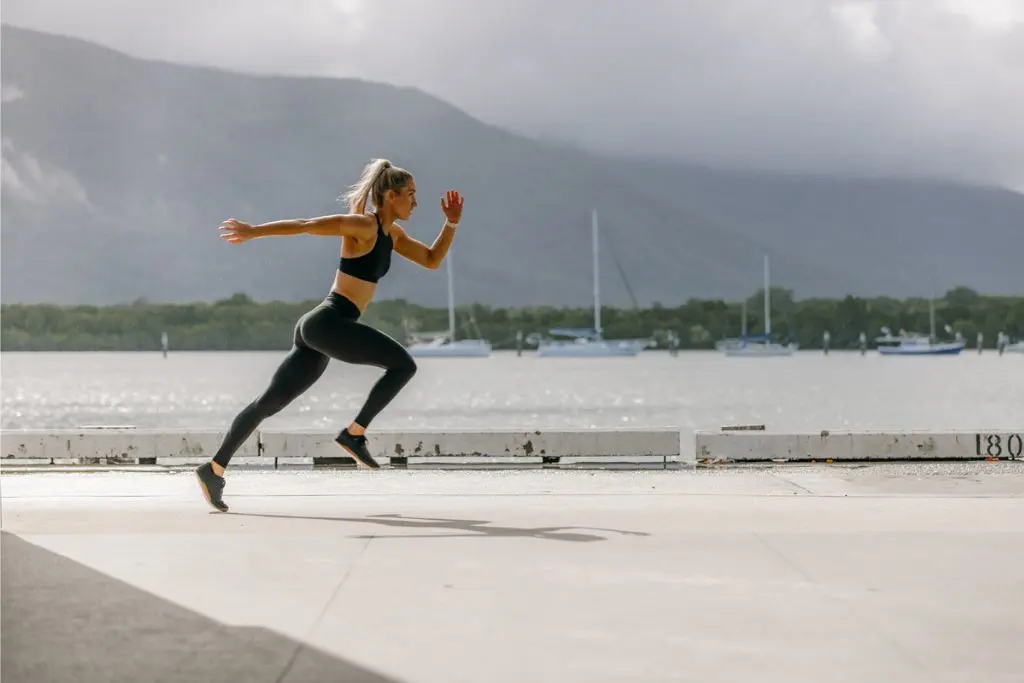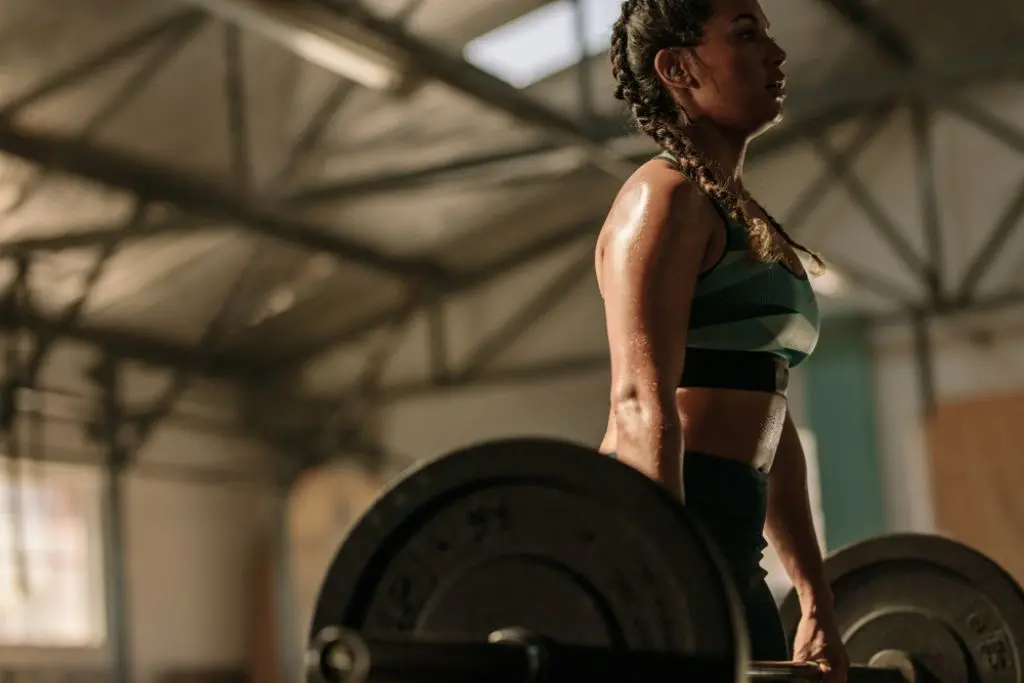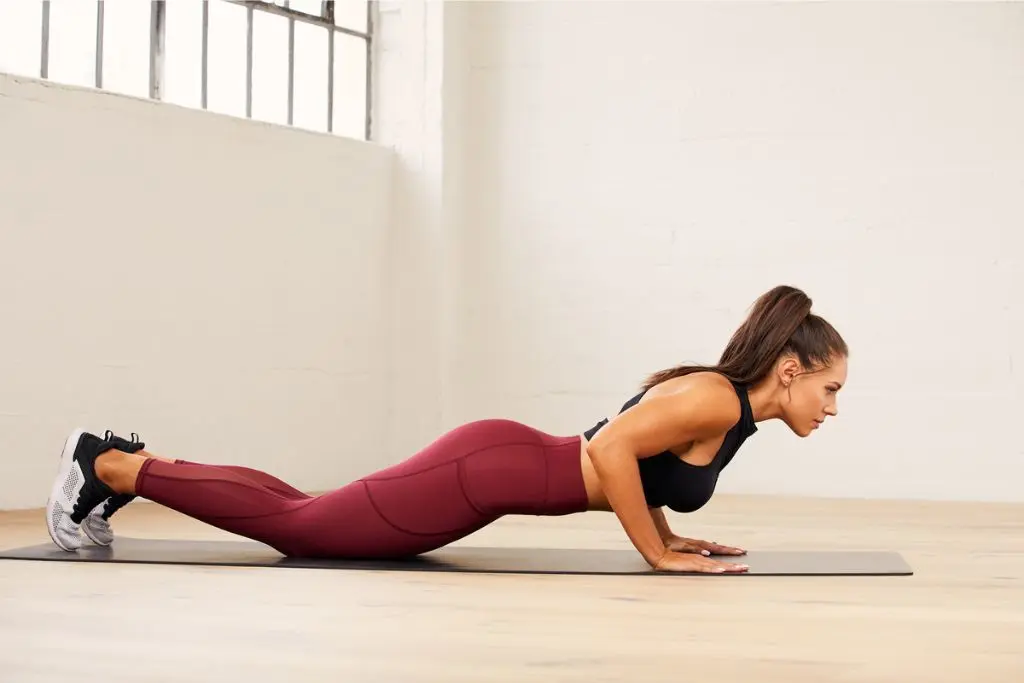How Fit Are You? Try These Easy Benchmark Tests

January 17, 2023

Throughout your health and fitness journey, the feeling that you’re making progress and moving closer towards your goals can show up in many different moments. Perhaps it’s when you realise you’re hopping out of bed with excitement to work out rather than dread. You might be able to perform exercises or lift weights with greater ease than you could three months ago. Or maybe you’re living each day with a newly discovered sense of confidence and empowerment.
If making measurable progress is important or motivating to you, fitness tests can be a great way to keep track of where you are, celebrate how far you’ve come, or give you a reason to keep putting in the effort. Not to mention, a fitness test can be a challenging workout in itself or a way to spice up your usual routine.
How do fitness tests work?
To get a clear sense of your progress, the best way to use fitness tests is to perform the same test once every couple of months or at the start and end of your chosen Sweat program, as it takes weeks for measurable change to occur.
Because there are several components of fitness - such as cardiovascular endurance, muscular strength, muscular endurance, flexibility and body composition - there isn’t one single fitness test, so it pays to think about what you want to improve and choose the test that best matches your focus area. After all, it wouldn’t make sense to measure your heaviest squat if you’re working on building your cardio endurance!
Ready to get started? Here are some simple but effective benchmark tests to measure different elements of your fitness and help you track your progress.

Test your cardio fitness
While measuring your VO2 max - the amount of oxygen your body uses while exercising as hard as you possibly can - is often done in a lab, there are simple ways to measure your cardio fitness and endurance, meaning how well your body’s circulatory and respiratory systems can supply oxygen to your body during long periods of sustained physical activity.
If you want to test your cardiovascular fitness and endurance, try one of the following:
Run 800m or one mile (1.6km) for time. If you’re not at a running level of fitness yet or have joint issues, you could power walk the distance or do a mixture of running and walking as your fitness builds!
Hop on a stationary bike and cycle 2km for time.
Test your grip strength
Measuring the grip strength of your hand and forearms might sound like a niche test, but hear us out. According to Harvard Health, one international study measured grip strength in nearly 140,000 adults across 17 countries, while also following their health for an average of four years. The researchers found each 11-pound decrease in grip strength over the study period was linked to:
16% increased risk of dying from any cause
17% increased risk of dying from heart disease
9% increased risk of stroke
7% increased risk of heart attack
According to the study, grip strength was even a better predictor of cardiovascular disease and death than blood pressure!
These connections were still strong even after adjusting for factors such as age, smoking and exercise habits!
The best way to test your grip strength and get an accurate reading is to use a grip strength device known as a dynamometer (which you may be able to find at a gym), which you can then compare to charts such as the grip strength reference table from Iowa State University.
If you don’t have access to a dynamometer but want to test and improve your grip strength, you can try recording your maximum time hanging from a pull-up bar or gymnastics rings, or add some weight plates to a barbell, deadlift it to your hips and hold it for time.

Test your muscular strength
Many women in the Sweat Community are big fans of strength training with programs like Strength & Sculpt, BUILD, Lifting At Home and PWR. There’s nothing like the badass feeling of being able to lift a weight you could hardly budge a few months ago, and that’s what testing your muscular strength is all about.
At the start and end of a strength training program, you might want to test your 1RM or one rep max - a test already incorporated into the BUILD program at the start and every 12 weeks.
Your 1RM is the maximum weight you can lift if you only have to do one repetition of an exercise. It's considered the “gold standard” test when it comes to measuring your strength. When you lift your 1RM weight, you shouldn't be able to complete a second repetition. The idea is you give everything you have in that single rep — that's where the name comes from.
It’s best to test your 1RM with major compound lifts such as squats, deadlifts and bench presses. Since you’ll be lifting heavy weights that really challenge your muscles, make sure you have someone to spot you.
Test your core strength and endurance
Core strength is about so much more than having abs - a strong core helps support you in all your daily movements, as well as making tough workouts and lifting weights a whole lot easier on the rest of your body.
Developing core strength is a common fitness goal as it is essential for so many exercises and easy to measure your progress with one of the most well-known zero-equipment exercises there is - a forearm plank.
Holding a hover or forearm plank engages your front, back and side core muscles at once and avoids the spinal discomfort that can come from repeatedly performing core exercises like sit-ups or crunches.
Just remember to maintain good form with your shoulders stacked over your elbows and your body in a straight line - you don’t want your hips sagging or lifting. Holding a forearm plank for two minutes or longer is a great goal!

Test your muscular endurance
Just like cardio endurance is a great measure of how well your cardiovascular system can work for a sustained period, muscular endurance is way to measure how long your muscles can continue to work without fatiguing. Seeing improvements in your muscular endurance is a surefire way to tell if your training is paying off!
Lower body muscular endurance tests:
Wall sit: The leg wall sit test is a great benchmark test to work your glutes, quads and hamstrings. It will have your legs shaking by the end! Start with your feet shoulder-width apart and your back against a smooth vertical wall, before sliding your back down the wall until both your knees and hips are at a 90-degree angle. Now what? That’s it. Start the clock and see how long you can hold this position for!
AMRAP bodyweight squats: No timer is necessary for this one! Just complete as many reps as possible before you need to take a break.
Upper body muscular endurance tests:
AMRAP push-ups: Push-ups are one of the most effective functional training exercises because they work a range of upper body and core muscles at once. This test is simple - complete as many push-ups as you can without stopping, either on your knees or your toes. When you need to take a break or you start to compromise your form, that’s when you’re done!
Test your flexibility
Taking time to stretch and work on your flexibility is something that’s easy to neglect when it comes to your training, but it’s incredibly important if you want to perform exercises with proper form, excellent mobility and range of motion, and avoid tight muscles, joint problems or injuries.
The most well-known flexibility test is the sit and reach, which measures the flexibility of your hamstrings and lower back. From sitting on the ground with your legs outstretched in front of you, reach your hands towards your toes as far as you can. For an accurate measurement, use a ruler or measuring tape, or simply make a note of which part of your legs you can reach. Easily touching your toes or reaching beyond is fantastic!
For upper body flexibility, a classic test is to try and bring your hands together behind your back - one arm reaching back over your shoulder and the other twisting behind you.
If you’re motivated by progress and measurable goals, knowing exactly how fit you are right now is a great way to start a fitness journey or see tangible progress in a few months’ time. Have a think about what you want to achieve or improve, pick your benchmark test to suit, and you’re away!

A more empowered you starts with Sweat, and our editorial team is here to bring you the latest fitness tips, trainer recommendations, wellbeing news, nutritional advice, nourishing recipes and free workouts.
* Disclaimer: This blog post is not intended to replace the advice of a medical professional. The above information should not be used to diagnose, treat, or prevent any disease or medical condition. Please consult your doctor before making any changes to your diet, sleep methods, daily activity, or fitness routine. Sweat assumes no responsibility for any personal injury or damage sustained by any recommendations, opinions, or advice given in this article.
Fitness